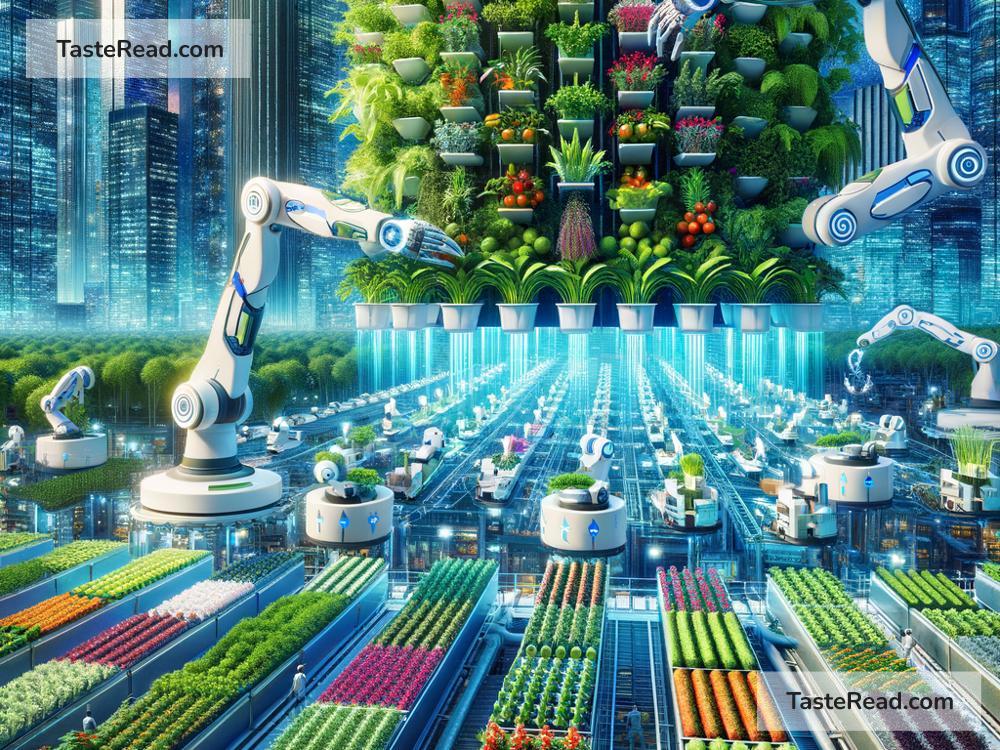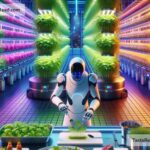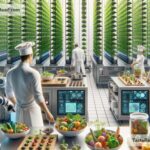The Future of Food: Transformative Ecosystems Changing How We Eat
Have you ever wondered what food will look like in the future? As the world faces big challenges like climate change, population growth, and limited resources, the way we grow, produce, and consume food is rapidly evolving. Scientists, farmers, and innovators are working together to create better ecosystems and smarter solutions to help us eat in healthier, more sustainable ways. These changes will not only make food more environmentally friendly but also improve how it is produced and shared across the globe.
Let’s dive into the future of food and explore how transformative ecosystems will shape this important part of our lives.
What Are Transformative Ecosystems?
Transformative ecosystems are systems or networks that bring together people, nature, and technology to solve big challenges. In the context of food, these ecosystems are changing how we farm, process, and deliver food to ensure it’s more sustainable, efficient, and fair. By using cutting-edge technologies, innovative farming practices, and collaborative partnerships, transformative ecosystems aim to create a food system that works well for both humans and the planet.
Why Do We Need Change?
The way we produce and consume food today has serious consequences for the environment and our health. Industrial agriculture, which produces most of the world’s food, often relies on chemical fertilizers, pesticides, and large amounts of water. These practices lead to deforestation, soil degradation, water scarcity, and pollution. On top of this, food waste is a global issue, with tons of uneaten food being thrown away every year while millions of people go hungry.
The rising global population—expected to reach nearly 10 billion by 2050—will put even more pressure on the food supply. If we continue farming and eating the way we do now, it will be difficult to provide enough nutritious food for everyone. That’s why we need to rethink how we approach food systems and create ecosystems that are both productive and sustainable.
Innovations in Farming
Farming of the future is all about using innovative techniques to grow more food with fewer resources. Here are some exciting changes happening in agriculture:
-
Vertical Farming: Imagine growing lettuce, strawberries, or herbs in tall stacks inside a building. Vertical farming allows crops to be grown indoors in controlled environments, using LED lights and advanced watering systems. This method uses less land and water than traditional farming and makes it possible to grow food in cities, close to where people live.
-
Precision Agriculture: Farmers today can use drones, sensors, and artificial intelligence to monitor crops and soil conditions more closely. This technology helps them know exactly how much water, fertilizer, or pest control is needed, reducing waste and boosting yields.
-
Regenerative Farming: Instead of harming the environment, regenerative farming focuses on improving soil health and supporting biodiversity. Techniques like crop rotation, composting, and planting cover crops help restore natural ecosystems, making farms more resilient to climate change.
-
Lab-Grown Foods: Scientists are now able to grow meat, dairy, and other foods in laboratories using cellular technology. Lab-grown foods require fewer resources and produce less pollution, offering a promising alternative to traditional livestock farming.
Food Innovations for a Healthier Planet
Transformative ecosystems aren’t just changing how food is grown—they’re also reshaping what ends up on our plates. Many companies are experimenting with new kinds of food that are sustainable and nutritious. For example:
-
Plant-Based Proteins: Foods made from plants, like veggie burgers and dairy-free milk, are becoming increasingly popular. These alternatives are better for the environment and require fewer resources to produce.
-
Edible Algae: Algae, like spirulina, is a nutrient-rich food source that grows quickly and uses minimal water. It could become a key ingredient in future diets.
-
Insects as Protein: Eating bugs might sound strange, but crickets and mealworms are packed with protein and require very little space and energy to farm. Some parts of the world already consume edible insects, and experts believe this trend will grow globally.
Food Waste Solutions
Food waste is one of the biggest challenges for the current food system. About one-third of all food produced globally goes to waste, which not only harms the environment but also costs billions of dollars each year. Transformative ecosystems address this issue by developing creative solutions, such as:
- Using apps that help connect grocery stores and restaurants with people in need, ensuring leftover food doesn’t go to waste.
- Turning food scraps into compost or even bioenergy, giving waste a second life.
- Building smarter packaging that keeps food fresh for longer and reduces spoilage.
Collaboration for a Better Future
The future of food relies on collaboration—farmers, scientists, governments, and individuals all need to work together to support transformative ecosystems. Farmers can adopt sustainable practices, scientists can create new technologies, governments can set policies to protect the environment, and each of us can reduce food waste and choose more sustainable products.
What Can You Do?
You don’t need to wait for futuristic technology to start making an impact. Here are simple steps you can take today to help shape a better food future:
- Eat more plant-based meals to reduce your environmental footprint.
- Support local farmers by buying from farmers’ markets or community-supported agriculture programs.
- Reduce food waste by planning your meals and composting scraps.
- Educate yourself about where your food comes from and choose brands that prioritize sustainability.
Conclusion
The future of food is exciting, full of innovation and potential. Transformative ecosystems are revolutionizing how we grow, produce, and consume food, contributing to healthier people, a cleaner environment, and a more equal society. While challenges lie ahead, working together and embracing change can create a food system that is sustainable, fair, and resilient. So, let’s be curious, informed, and proactive as we step into a world where food is part of the solution, not the problem.


